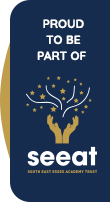Intent
At Westbrough we follow the Mastery approach through the White Rose programme, which has three key principles: deep understanding, mathematical thinking and mathematical language, with problem solving at the heart of the curriculum. Instead of learning mathematical procedures by rote, we want pupils to build a deep conceptual understanding of concepts which will enable them to apply their learning in different situations. The habits of thinking mathematically are life-enriching as it is vital to be numerate to participate fully in society. Therefore, we ensure we make rich connections across mathematical ideas to develop those skills from EYFS to Year 6.
We intend to do this by:
- Ensuring our children have access to a high quality maths curriculum that is both challenging and enjoyable, and builds upon previous learning.
- Providing our children with a variety of mathematical opportunities, which will enable them to make the connections.
- Showing the children that maths underpins much of our daily lives
- Ensuring children are confident mathematicians who are not afraid to take risks.
- Fully develop independent learners with inquisitive minds who have secure mathematical foundations and an interest in self-improvement
- Providing children with the opportunity to apply their mathematical knowledge across other curriculum areas.
Implementation
The White Rose programme has provided curriculum resources alongside professional development. Therefore, all teaching staff have now been fully trained in implementing the approach in their classrooms ensuring consistency throughout school.
Our mathematics curriculum is cumulative - each school year begins with a focus on the concepts and skills that have the most connections, and this concept is then applied and connected throughout the school year to consolidate learning.
As Mathematical language is a key principle of our approach, at the start of each new topic, key vocabulary is introduced, revisited throughout lessons and embedded as the topic progresses.
Children are taught through the C-P-A (Concrete – Pictorial – Abstract) approach. This allows teachers to show clear modelling and reinforce the learning that is achieved by going back and forth between the representations, building pupils’ conceptual understanding.
Teachers use a lesson structure which allows the lesson to be pacey whilst the children acquire a new skill, apply the skill and deepen the skill within the lesson.
Feedback is given on children’s learning in line with our marking and feedback policy. Formative assessment within every lesson helps teachers to identify misconceptions, the children who are ready for a challenge or the children who need to access support through same-day interventions.
Impact
The Mastery approach allows children to develop their mathematical fluency whilst being able to apply this knowledge through reasoning and problem solving. Therefore, children are able to move between different contexts and representations of maths flexibly. They are also able to show a concept in multiple ways, use mathematical language to explain their ideas and can independently apply the concept to new problems in unfamiliar situations.
Pupils need to be fluent, but that fluency must encompass understanding and be accompanied by reasoning and problem solving.
Pupils will leave us prepared for the next stage in their lives with:
- Quick recall of facts and procedures
- The flexibility and fluidity to move between different contexts and representations of mathematics
- The ability to recognise relationships and make connections in mathematics
- Confidence and belief that they can achieve
- The knowledge that maths underpins most of our daily lives
- Skills and concepts that have been mastered.
A mathematical concept or skill has been mastered when a child can show it in multiple ways, using the mathematical language to explain their ideas, and can independently apply the concept to new problems in unfamiliar situations and this is the goal for our children.
- NEW NC RTP 2022 3 FINAL March 2023 version
- Reception small steps Autumn
- Reception small steps Spring
- Reception-Autumn-overview-3 0
- Reception-Spring-overview
- Reception-Summer-overview
- Year 1 Scheme of Learning Small Steps
- Year 1 Scheme of Learning Small Steps Spring
- Year 1 Scheme of Learning Small Steps Summer
- Year 2 Scheme of Learning Small Steps
- Year 2 Scheme of Learning Small Steps Spring
- Year 2 Scheme of Learning Small Steps Summer
- Year 3 Scheme of Learning Small Steps
- Year 3 Scheme of Learning Small Steps Spring
- Year 4 Scheme of Learning Small Steps
- Year 4 Scheme of Learning Small Steps Spring
- Year 4 Scheme of Learning Small Steps Summer
- Year 5 Scheme of Learning Small Steps
- Year 5 Scheme of Learning Small Steps Spring
- Year 5 Scheme of Learning Small Steps Summer
- Year 6 Scheme of Learning Small Steps
- Year 6 Scheme of Learning Small Steps Spring
- Year 6 Scheme of Learning Small Steps Summer





